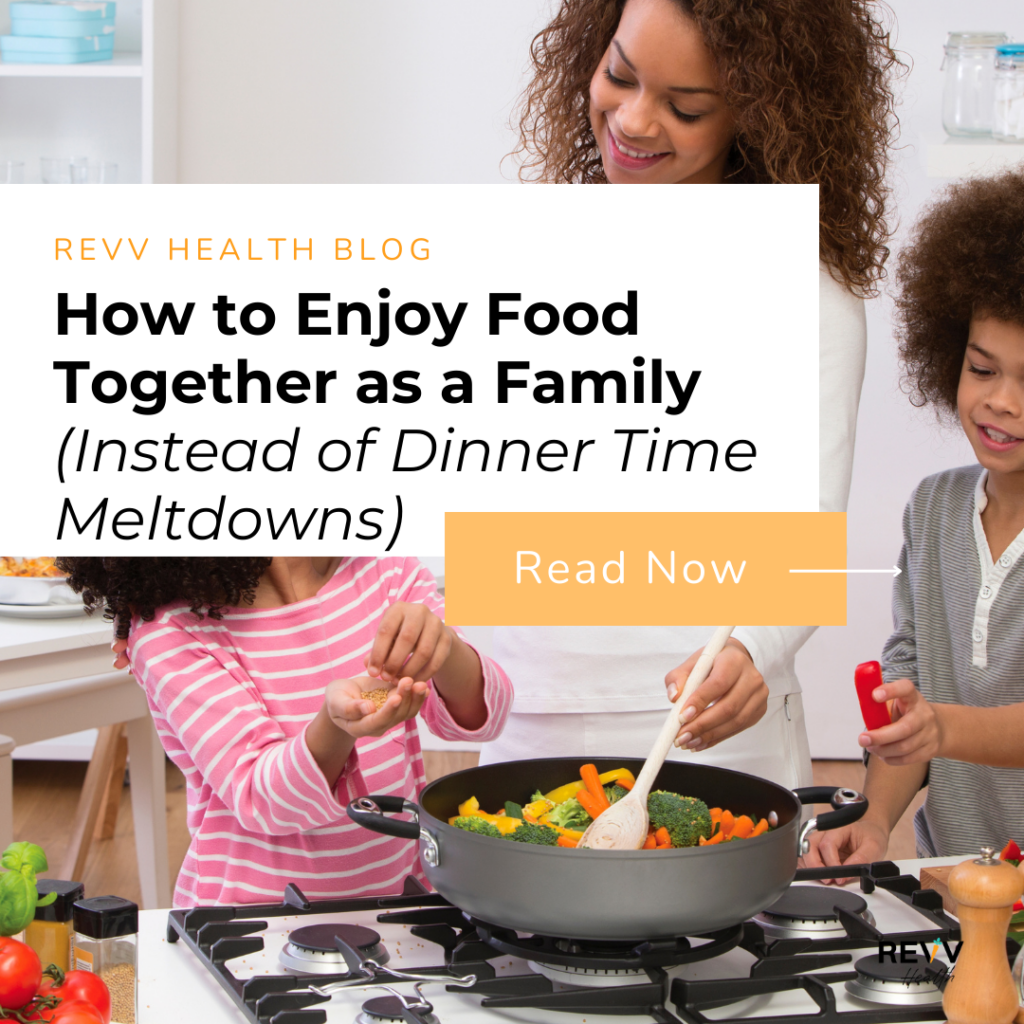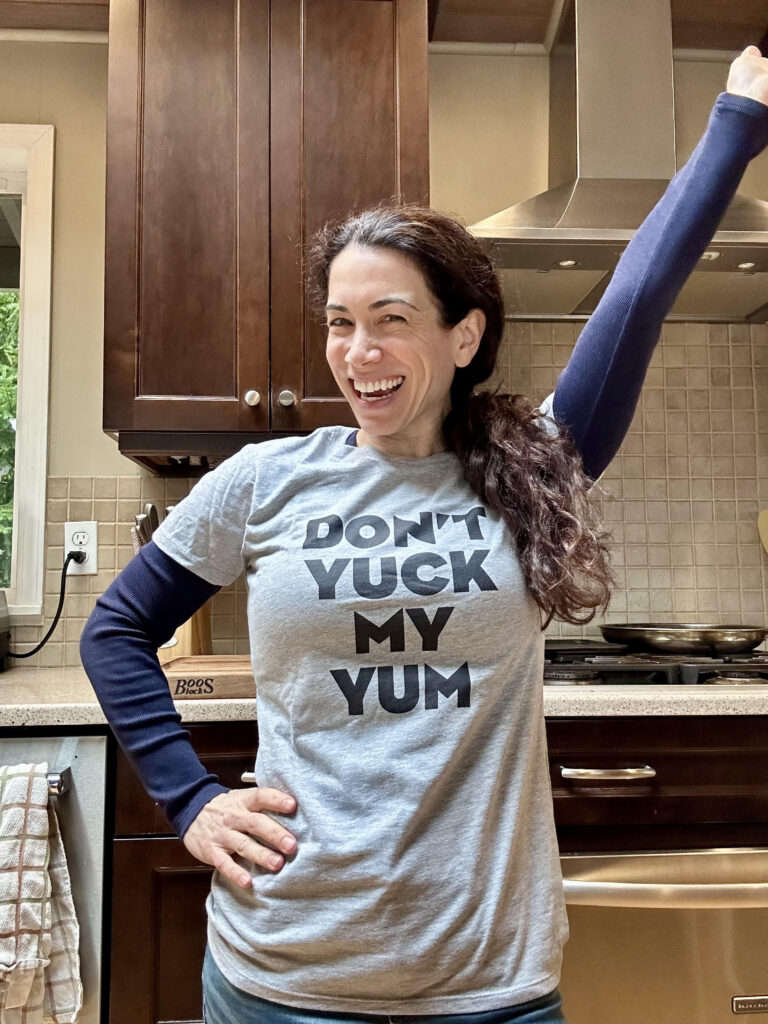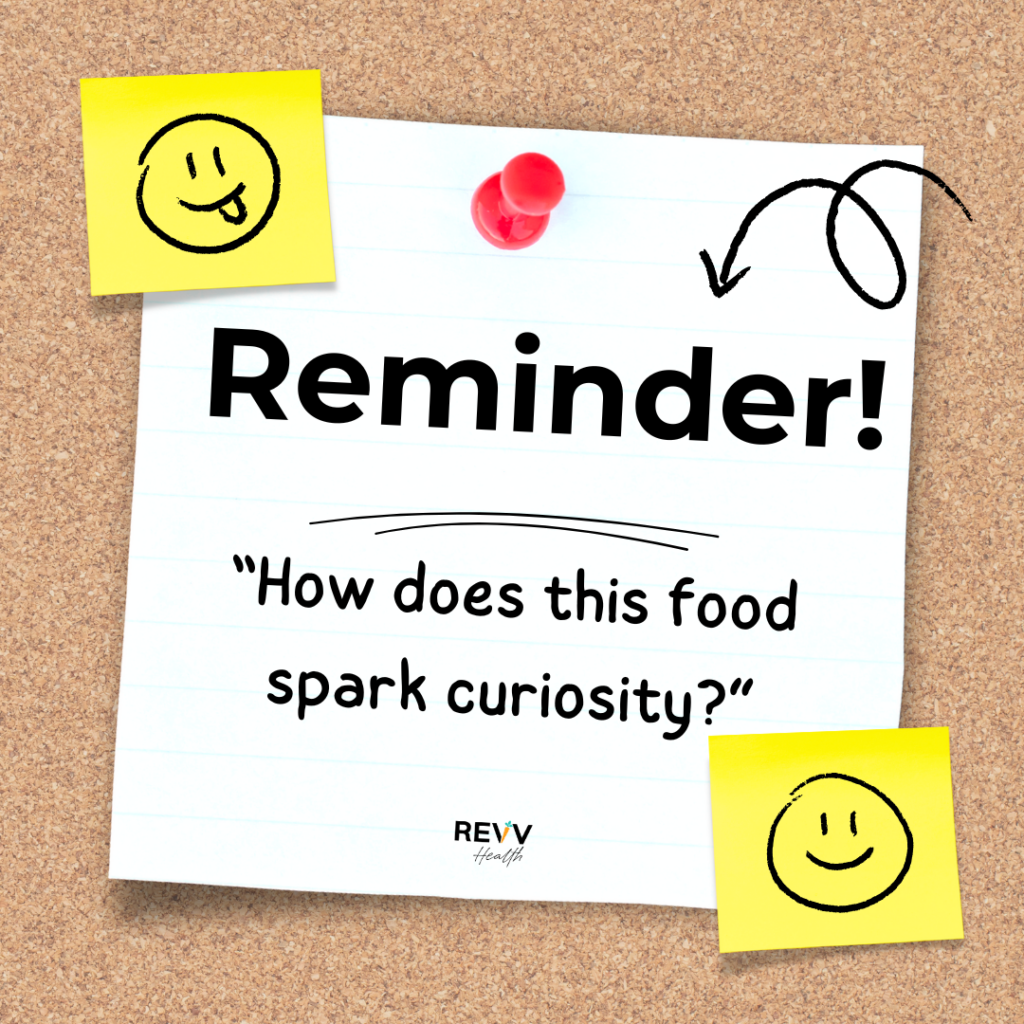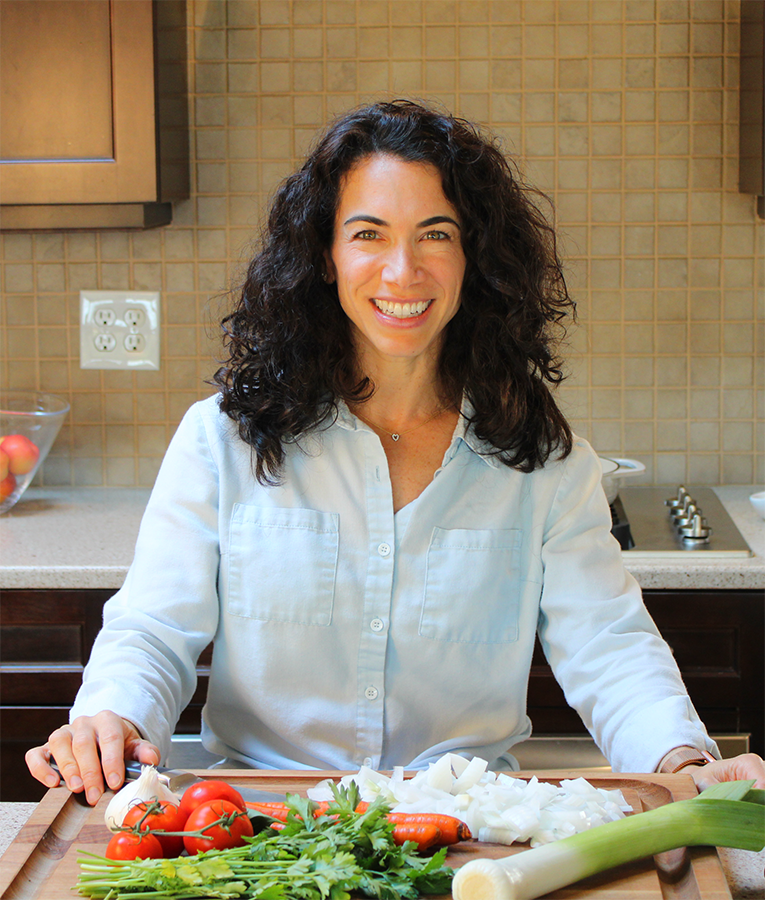Listen to this article here:
Is dinnertime filled with stress, frustration, and mealtime battles? Do you wish your kids (or even your picky spouse) were more flexible and open to trying new foods?
Believe it or not, the solution might be simpler than you think.
Food fears and picky eating don’t disappear overnight, but they also don’t go away in isolation. We overcome them by enjoying food together, where that connection makes new experiences feel more safe and less intimidating.
As a dietitian (hi!! I’m Marissa), I’ve seen firsthand that one of the best ways to help kids and adults explore new foods is to enjoy food together in a no-pressure environment. When mealtimes focus on connection instead of control, trying new foods becomes easier (and even fun!)
In this post, I’ll help you:
- Explore how curiosity can help overcome food fears and make new foods feel less intimidating.
- Learn how enjoying food together can make trying new foods easier, whether you’re navigating picky eating or food anxieties.
- Find ways to create a low-pressure mealtime environment that builds confidence and connection without the power struggles.
Whether you’re supporting a picky eater, managing food anxieties, or moving past diet culture’s “off-limits” mindset, you’ll find tips to make mealtimes more joyful, connected, and culturally rich.
Enjoying food together starts with curiosity
For most of us, if something makes us anxious, we tend to go with the safest option and avoid it.
Especially foods that we aren’t familiar with.
And while that might feel like the easiest choice at the moment, avoiding new foods actually reinforces fear. This makes it harder to accept different foods in the long run (and therefore more difficult to learn to like those new foods).
What can we do instead?
Research around anxiety shows that facing these food fears in small, manageable ways (also known as “exposure”) can help reduce anxiety over time. (source)
This can apply to food fears, but HOW we face these fears matters.
Let me be clear: exposure to new foods doesn’t mean forcing yourself (or someone else) to choke down a bite of something they don’t want to eat.
In fact, that kind of militant pressure can backfire, leading to MORE food fears and even a disconnection from internal appetite cues, which is something I talk about in detail in my article on encouraging mindful eating without food shaming.
So what can we do? Instead of pushing, we want to start with something much more effective:
Being curious.
When you explore new foods with a curious mindset, it shifts the focus from…
“What if I don’t like this?” to…“I wonder what this will be like?”
Notice how that simple switch might have even let your mind relax a little.
You can see how this might lower the stakes considerably, especially for someone who already has a lot of limiting beliefs about food and nutrition.
In the next section, I will teach you six practical ways to “spark curiosity” around new foods so that you can make this shift inside and outside of your home.
6 ways to “spark curiosity” with food
Remember Marie Kondo?
She’s the tidying expert who became famous for asking people to hold up their belongings and ask, “Does this spark joy?”
If it didn’t, then the item was “thanked and let go.”
I always found this concept hilarious…(that is, to have a chat with your clothing).
But this simple question really does help people decide what matters to them in their homes…and in their lives.
Well, we’re stealing her concept!
But instead of decluttering closets, we’re applying it to food. And using the following question:
“How does this food spark curiosity?”
To flex your curiosity muscle, here are six simple, low-pressure ideas to enjoy food together:
1. Explore without the pressure to taste
Curiosity doesn’t have to start with eating. This is especially true for kiddos. Instead of forcing a bite, begin by exploring new foods through your other senses: sight, smell, and touch.
Pro tip: have fun talking with the others at the table! What are the colors, textures, or even how a food sounds!? (Yes, tapping a food counts!) This shared exploration reduces the fear of the unknown by making the food feel more familiar and fun.
2. Learn about the food’s origin story
Food always has a connection to people, places, and traditions. Learn where a dish comes from, the cultural stories behind it, or how it’s made in different parts of the world.
Pro tip: enjoying food together becomes richer when it’s tied to these stories, creating an emotional bridge that makes trying new foods feel exciting rather than scary.
3. Take the spotlight off the “newness” of the food
Instead of making the new food the star of the show (which can feel like a lot of pressure to kids and adults alike), serve it alongside familiar favorites. This way, the new food is part of the experience, not a “test.”
For example, if you’re offering fresh pineapple for the first time, have it with their usual favorites, such as strawberries.
Pro tip: adding familiar foods helps normalize the “new” food without creating additional anxiety and lets you focus on the joy of simply being together around the table.
4. Use descriptive, neutral language
When you’re exploring new foods with others, language matters. Ditch words like “weird” or “gross” and instead focus on neutral or positive descriptors, such as: “it’s crunchy,” “it smells spicy,” or “this has a creamy texture.”
Pro tip: you can try using the line, “Don’t yuck my yum!” This helps keep the experience judgment-free, making it easier for everyone to feel comfortable throughout the process.
5. Play with your food (yes, really!)
For kids (and even adults), turning food into an activity can ease anxiety. Arrange foods in fun shapes, compare how different fruits feel, or guess what’s inside of a mystery spice jar based on smell alone.
Pro tip: play can happen at any age. Being playful fosters curiosity and creates positive memories around food.
6. Be a role model for curiosity
If you’re supporting someone with food fears, model curiosity yourself. Try new foods in front of others, and narrate your thoughts without judgment. As an example, you might say, “Wow, I’ve never had this before. I wonder if it’s sweet or sour?” Show that it’s okay to be unsure or even not like something.
Pro tip: when others see you approaching food with curiosity instead of caution, it invites people into the entire experience, as well.
When it comes to overcoming food fears and exploring new cuisines, curiosity is our secret sauce.
Need a mantra on a Post-it note? Nothing wrong with that!
Why food rejection happens (and why it’s okay)
So, you’ve sparked curiosity, shared a meal, and introduced a new food… and it’s met with a hard “no.”
Maybe it’s a polite “no, thank you” or the classic “ew, gross!” response.
It’s easy to feel frustrated or discouraged, especially if you’ve put effort into creating a positive experience.
But I want you to know something: rejection is totally normal. In fact, it often means you’re on the right track.
…Wait, what?
Yup, rejection is okay! Trying new foods isn’t a one-and-done situation.
Research on food acceptance shows that it can take 10–15 positive exposures (or even more) before someone feels comfortable enough to try (or even enjoy) a new food (Source). Tense and forced interactions with scary foods just set you back.
Every time someone encounters a new food, even if they don’t eat it, it counts as an exposure.
And that’s progress.
Especially if your meal times are relaxed and pressure-free, trying new things feels less intimidating.
Here’s what you can do to keep enjoyment high:
- Keep it chill: no big reactions. A simple “that’s okay, you don’t have to like it today” works wonders.
- Leave the door open: you might say, “Maybe next time it’ll feel different,” and move on.
- Celebrate the experience: whether someone took a bite or just poked it with a fork, you explored something new together. And that’s worth more than the outcome.
At the end of the day, keep focusing on creating moments around food that feel safe, relaxed, and connected.
That is how we enjoy food together and make mealtimes meaningful.
Food is more than fuel
We often hear the expression, “Food is fuel,” and while that’s true, it’s only part of the story.
Food doesn’t just keep us alive. It helps us FEEL alive.
When we enjoy food together, it becomes more than a source of nutrients. Food is an incredible way to connect with others, celebrate traditions, and create lasting memories.
Think about your favorite meals. Chances are, it’s not just the taste you remember but the people you shared it with, the laughter around the table, or even the story behind the dish.
Food connects us to cultures, emotions, and experiences. It’s comfort during tough times, celebration during joyful ones, and a bridge that brings people together, no matter their background.
So yes, food fuels our bodies. But more importantly, it nourishes our connections, curiosity, and sense of belonging.
Final thoughts: your challenge this month!
Let’s put this all into action.
Here’s what we covered:
- Curiosity can be a tool to overcome food fears without pressure! Just exploration.
- Enjoying food together creates connection, making new experiences feel safe and fun.
- Rejection is part of the process, and every exposure helps build comfort over time.
Up for a challenge this month?
Try one new food with someone else and make it fun!
It could be a dish from a different culture, a fruit you’ve never tasted, or a simple recipe you’ve never made.
Need ideas? Download my free The Curious Eater’s Guide to Exploring New Foods for ideas to help you enjoy food together in meaningful ways.
Because at the end of the day, it is simply wonderful to enjoy food together. And I hope this blog gave you some starter ideas to do just that.





0 Comments